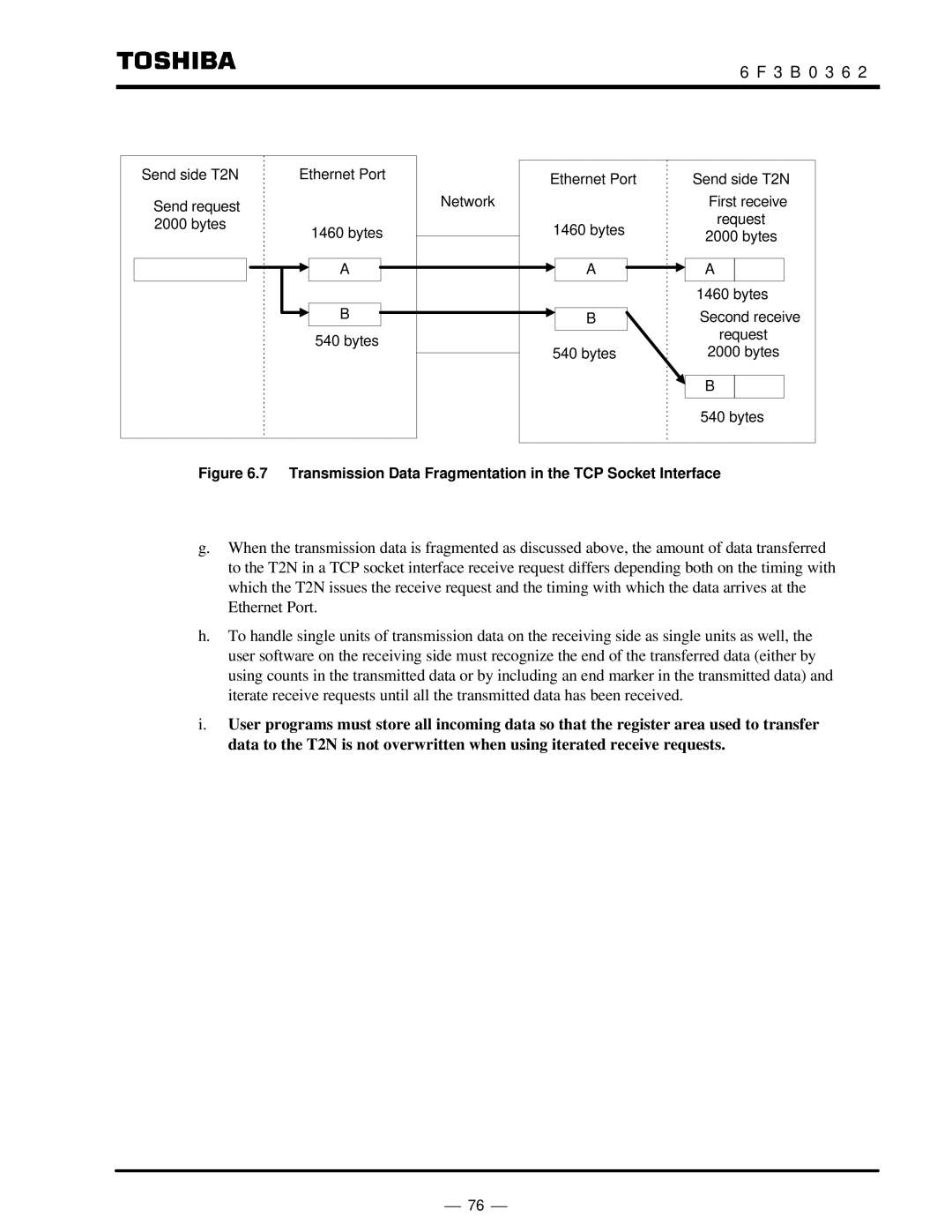
|
|
| 6 F 3 B 0 3 6 2 | |
Send side T2N | Ethernet Port | Ethernet Port | Send side T2N | |
|
| |||
ÀSend request | Á | Network | ¯First receive | |
 | request | |||
2000 bytes | ||||
1460 bytes | 1460 bytes | 2000 bytes | ||
| ||||
| A | A | A | |
|
|
| 1460 bytes | |
| B | B | °Second receive | |
| 540 bytes |
| request | |
| 540 bytes | 2000 bytes | ||
|
| |||
|
|
| B | |
|
|
| 540 bytes |
Figure 6.7 Transmission Data Fragmentation in the TCP Socket Interface
g.When the transmission data is fragmented as discussed above, the amount of data transferred to the T2N in a TCP socket interface receive request differs depending both on the timing with which the T2N issues the receive request and the timing with which the data arrives at the Ethernet Port.
h.To handle single units of transmission data on the receiving side as single units as well, the user software on the receiving side must recognize the end of the transferred data (either by using counts in the transmitted data or by including an end marker in the transmitted data) and iterate receive requests until all the transmitted data has been received.
i.User programs must store all incoming data so that the register area used to transfer data to the T2N is not overwritten when using iterated receive requests.
⎯ 76 ⎯
